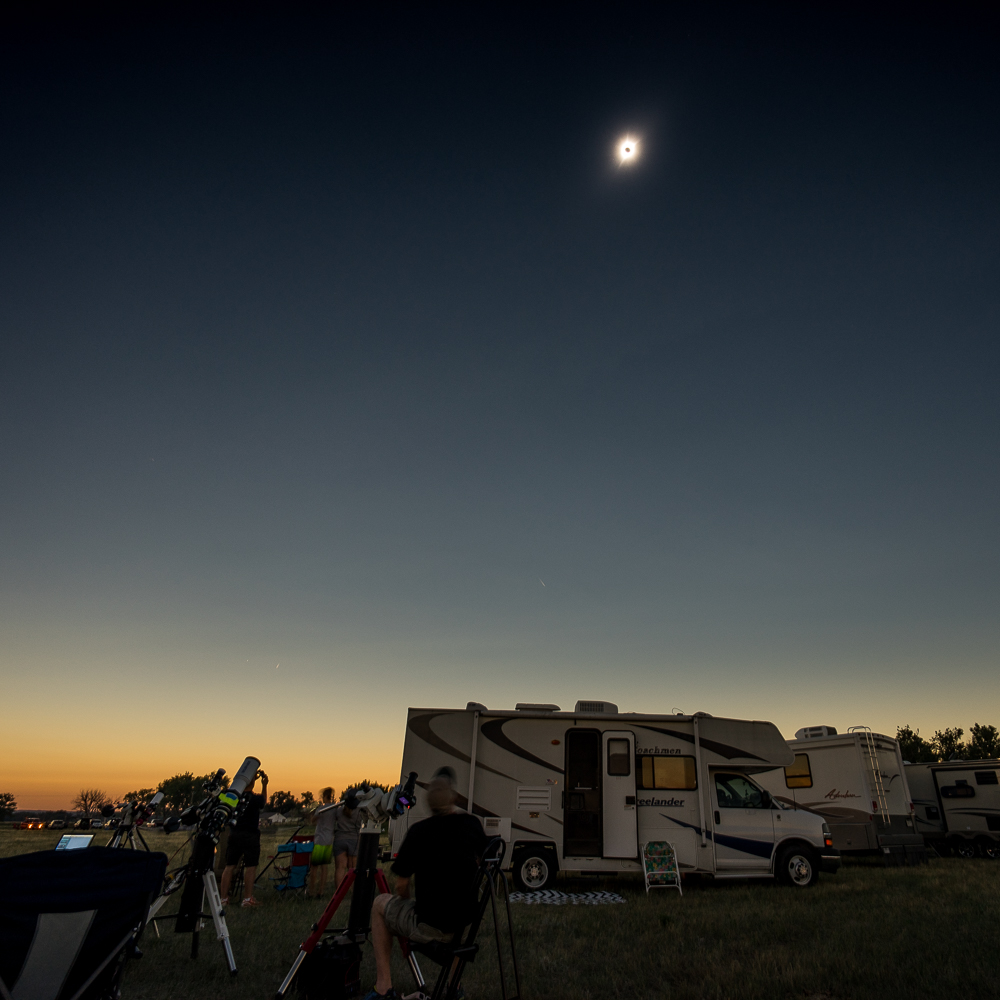"Sunshots" | |||
| « Previous | Back to Astrophotography Gallery | Next » | |
Ra, Nanahuatzin, Inti, Akycha, Ah Kin, Malakbel, Doumu, Surya, Amaterasu, Utu, Ekhi, Helios, Sol, Wala (Egyptian, Aztec, Incan, Inuit, Mayan, Arabian, Chinese, Hindu, Japanese, Sumerian, Basque, Greek, Roman,Australian Aboriginal) The Sun is clearly the dominant feature of the daytime sky, as well as all recorded human history. The above names are words for "sun god" in a host of mythological cultures, and the list is certainly not exhaustive. From a scientific point of view, the sun is nothing more than a rather ordinary, run-of-the-mill star just like so many of the trillions of stars in our galaxy. The difference is that it is so much closer to us (8 light-minutes, rather than light-years). An immense spherical collection of ionized hydrogen and helium gas with so much mass that its self-gravity is large enough to ignite nuclear fusion in the core, creating the light and heat that makes life on our planet possible. Our sun goes through 11 year cycles of maximum and minimum activity, as measured by the number of sunspots observed. As of 2019, the current minimum is ending, and the sun should begin showing more and more sunspots in the next several years. In preparation for the Great American Eclipse of 2017, I bought a small Lunt 50mm hydrogen-alpha telescope for looking at the sun. Until recently I hadn't used it very much since then, but now that the sun is "re-awakening" and becoming more active, I hope to do some more imaging and add some pictures here, assuming I get some interesting ones. The H-alpha scope can show fantastic surface detail, as well as prominances around the edges of the solar disc. Also shown at the bottom of the page are my images from the 2017 total eclipse taken from Orin, Wyoming. |



















